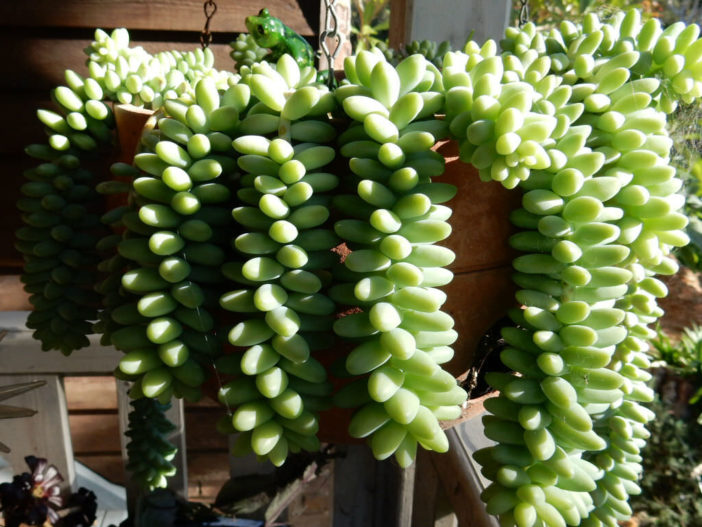Though most succulents prefer very bright light, even several or more hours of direct sun, some will burn quite easily if exposed to hot sun all day, especially when temperatures stay above the lower 90 °F (32 °C). Yet where light is too intense to grow them out in the full sun, quite a few have been grown for many years indoors, on covered patios, under porch roofs, and beneath trees.
Succulents are unique but commonly grown plants with fleshy leaves, stems, or roots for storing water in the dry seasons of their native habitats. They come in various shapes, sizes, foliage colors, and flowers and often have unique frills and bristles.
Because many are very easy to propagate and share with other gardeners and tolerate the indoors' typically low light and low humidity, many old pass-along plants have proven themselves as low-light succulents. For example, who has not seen an old Mother-in-Law Tongue, Christmas Cactus, Night Blooming Cereus, Pencil Plant, or Jade Bush that was part of a gift basket plant combo that outlived the original pot, set on a kitchen windowsill?
Several succulents do better in light shade during hot summers, including the Fairy Crassula (Crassula multicava) in mild-winter areas and the more cold-tolerant Stonecrops (Sedum). Others are best grown as container plants set in the shade and moved as needed for protection from winter cold or excess rainfall.

What Shade Succulents Need
All succulents generally do best in the sun, at least part of the day. Many will get leggy and weak and refuse to flower without at least six hours. Some get more colorful and bloom better in eight or more hours of direct sun.
However, some will fade, spot, or even scorch in the intense heat of the full sun, especially in humid climates and when temperatures remain above 90 °F (32 °C). These need to be shaded from mid-day and afternoon sun by buildings, lattice, arbors, shade cloth, or trees with light, fine-textured foliage.
Succulents can survive dry conditions for a long and usually go dormant in the winter. But in the growing season, they will grow and flower better with regular watering. Most, especially those grown in containers, will need watering in very hot seasons at least every couple of weeks.
Still, too much water is worse than too little, with those grown in the shade needing even less. This makes container-grown succulents even better for growing under dry porches or indoor windowsills.
Garden soils and potting soils for containers should hold moisture but allow excess water to drain quickly. Even ready-made succulent potting mixes usually need a little help. First, till in some compost and coarse sand to native garden dirt, at least 6 or 8 inches (15 or 20 cm) deep. And to both it and container potting soils, add extra drainage material such as pumice, grit, or expanded clay soil amendments, which look like kitty litter and are used by professional turf managers to loosen soils.
Fertilize succulents in the spring or during flowering with good low-nitrogen plant food, used at just half strength and none in the winter.
Good Succulents for Shade
Some of the most beloved succulents that tolerate lower light outdoors and bright but indirect light indoors include Aloe vera, Jade Plant (Crassula ovata), Devil's Backbone (Euphorbia tithymaloides), many different kinds of Sansevieria, and Florist Kalanchoe (Kalanchoe blossfeldiana).
Good vine-like or cascading succulents for shade include Wax Plant (Hoya), Burro's Tail (Sedum morganianum), Mistletoe Cactus (Rhipsalis), String of Pearls (Curio rowleyanus), String of Hearts or Rosary Vine (Ceropegia woodii), Christmas Cactus (Schlumbergera), Easter Cactus (Hatiora gaertneri), and Night Blooming Cereus (Epiphyllum).
For a better overall plant scene in shaded areas, accent these with other shade-loving but low-maintenance plants with dependable flowers or brighter or variegated foliage or flowers.
Source: diynetwork.com
Links
- Succupedia: Browse succulents by Scientific Name, Common Name, Genus, Family, USDA Hardiness Zone, Origin, or cacti by Genus
